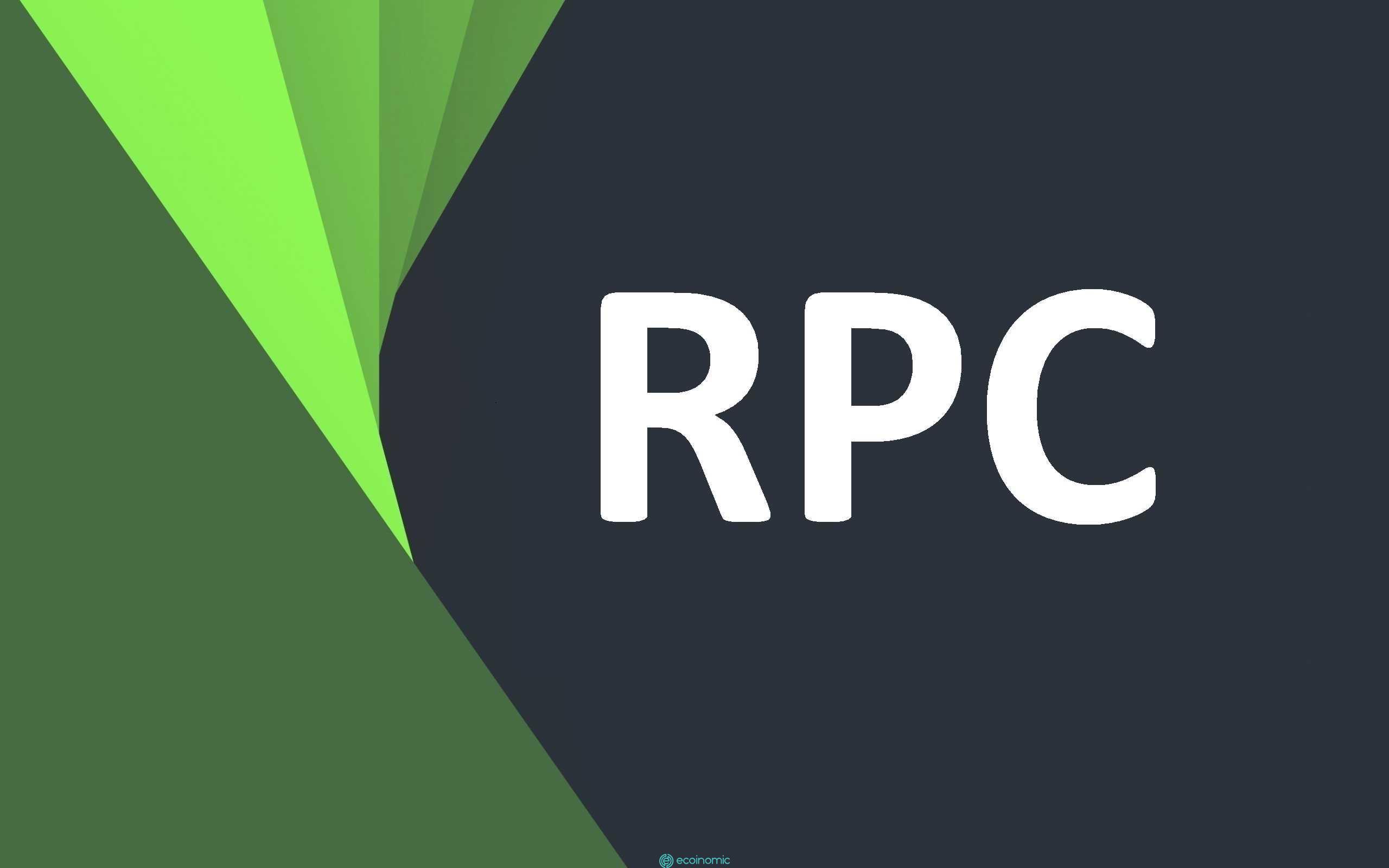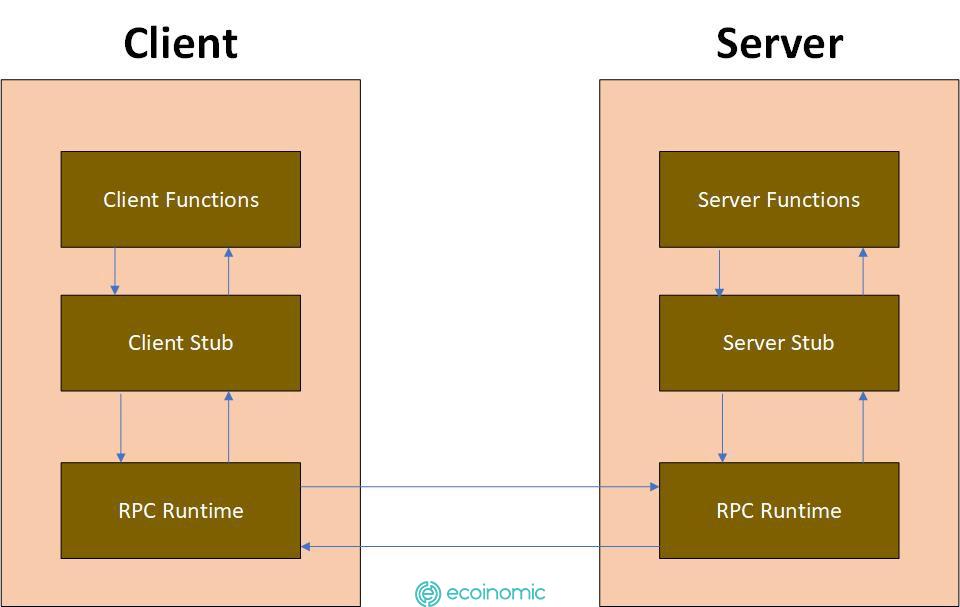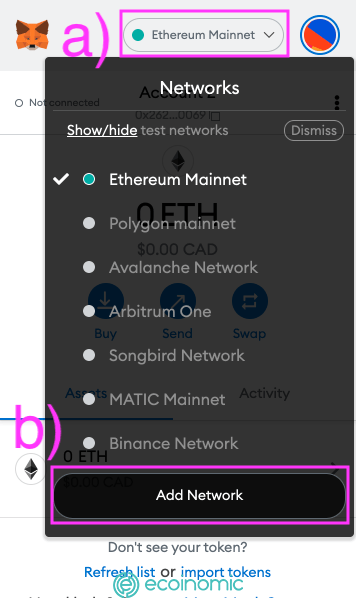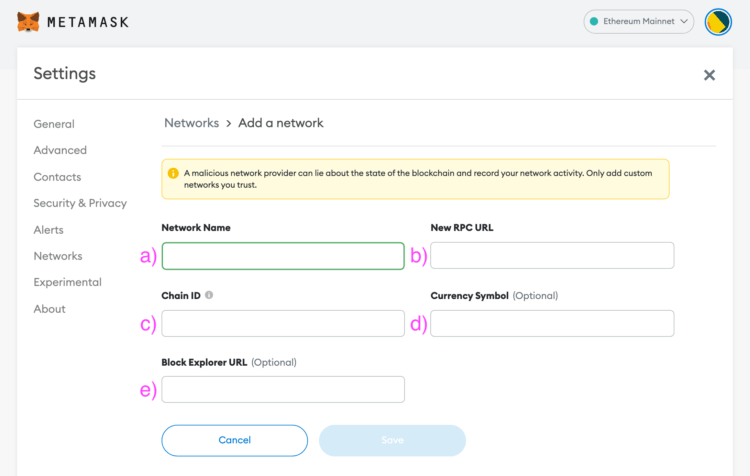Advertisement
RPC is the essential tool that blockchain developers use to build decentralized applications and projects.
Why RPC is so important in the blockchain ecosystem? In the following article, Ecoinomic.io will give an overview of RPC and its application in the blockchain field.
What is RPC in blockchain?
RPC stands for Remote Procedure Call, a technical model that allows communicating with remote servers and provides the ability to execute programs in a separate location.
In the field of blockchain, RPC is a set of protocols and interfaces that provide access to a server node on a given network, helping users connect and interact with the blockchain system.

Users can query blockchain-related information (such as block numbers, blocks, node connection,…) and send transaction requests through the RPC interface.
For example, when accessing DEX or using MetaMask to make a transaction, the user’s request goes through RPC to connect to Nodes that hold data from blockchains.
RPC classification
Public RPC
Public RPC provides access and connection to nodes for all users to create decentralized applications. For example, anyone with a custom RPC network can use MetaMask to interact on a polygon or EVM blockchain.
However, public PRC has some disadvantages such as costly operating costs, limited servers. Besides, operations are congested when the demand for public PRC is too large.
RPC as a service (Private RPC)
Private RPC only allows DApps to access private nodes, such as Moralis, GenesysGo, Runnode,…
>> Related: What is a Masternode?
Private RPC provides a solution to overcome the limitations of public RPC with higher throughput to help DApps operate stably, avoiding congestion.
Application of RPC in cryptocurrencies
Create decentralized applications
RPC allows all users to build decentralized applications (DApps) based on smart contracts with the ability to interact with one or more blockchains. RPC is integrated with the DApp allowing separate software applications to communicate with each other and automatically execute cryptocurrency transactions.
For example, the Expedia on Web 2.0 gives users access to Expedia.com to make hotel reservations. Based on the user’s demand, RPC will connect to several separate hotel websites to collect data such as availability, price, amenities,…
The same applies in DApps when it comes to giving users access and connection to information such as cryptocurrency prices, block data, ,…
Query blockchain data without access to a private node
When building decentralized applications, developers need to make requirements for the blockchain in JSON to access the necessary information such as block number, node connection, transaction history, blockchain data,…
They can set up a node by themselves and perform DevOps to maintain equipment and resolve server issues, or use services from a node provider like Ankr through an RPC solution. However, RPC is the most optimal option that provides reasonable prices and access to blockchains in the fastest way.

Simplify the process of building blockchain applications
RPC simplifies the process of building applications by developers.
For example, to display a cryptocurrency balance from another wallet on the interface of your website, you can simply create an API to request a connection to that wallet without creating a new wallet.
Create WebSockets to view real-time transaction data
WebSockets are API that allow continuous exchange of information between the client and the server, ensuring the connection process is always seamless, without the need to reset every time a message is sent. It’s useful for high-throughput applications that need to send and receive large amounts of data.
Run calls to access large amounts of information
Tasks such as encrypting the wallet, finding the current block size, creating multi-signature addresses,… can be executed easily through run calls, helping to optimize the application building process of developers.
The role of RPC in the blockchain
RPC is the optimal tool that provides connectivity to the server. When a developer creates a decentralized application (dApp) with RPC, users can access network servers through a common option to request a connection and perform operations such as viewing balances, creating transactions, or interacting with smart contracts.
For example, if a user accesses a Decentralized exchange (DEX) by connecting a Metamask wallet, requests and information will be routed through RPC to communicate with the blockchain server.
Besides, RPC allows developers to connect to nodes to build decentralized applications and projects.
Some notes when customizing RPC to connect to the EVM chain
To explore the ecosystem in a blockchain, you first need to learn the operations and wallets that support token storage on that blockchain.
For EVM Chain wallet addresses (usually starting with 0x…), users can customize RPC to connect to DApps on the blockchain using MetaMask wallet. The steps are as follows:
- Go to MetaMask’s website and download the MetaMask wallet.
- After installing and securing the seed phrase, click on Ethereum Mainnet in the upper corner of the MetaMask screen and select [Add network].

Users can choose to manually customize RPC, enter network details or connect automatically using Chainlist. However, Chainlist only stores information of prominent networks.
If you are a new user, Ecoinomic.io recommend manual installation, when you are proficient, the automatic mode will make the connection process faster.
>>> Related: How to add BNB Chain to MetaMask wallet

To customize RPC, users can search for information by:
- Search for “Custom RPC [project name]” on google
- Search instructions to connect blockchain on the project’s official medium or request assistance from the CM of the project in case the information cannot be found.
- Chat with CM of project on EVM chain for guidance and answers.
Conclusion
Hopefully, through the above article, Ecoinomic.io has helped you get a better grasp of RPC, its application in blockchain operations, as well as experience in customizing RPC to connect to EVM chain.
















